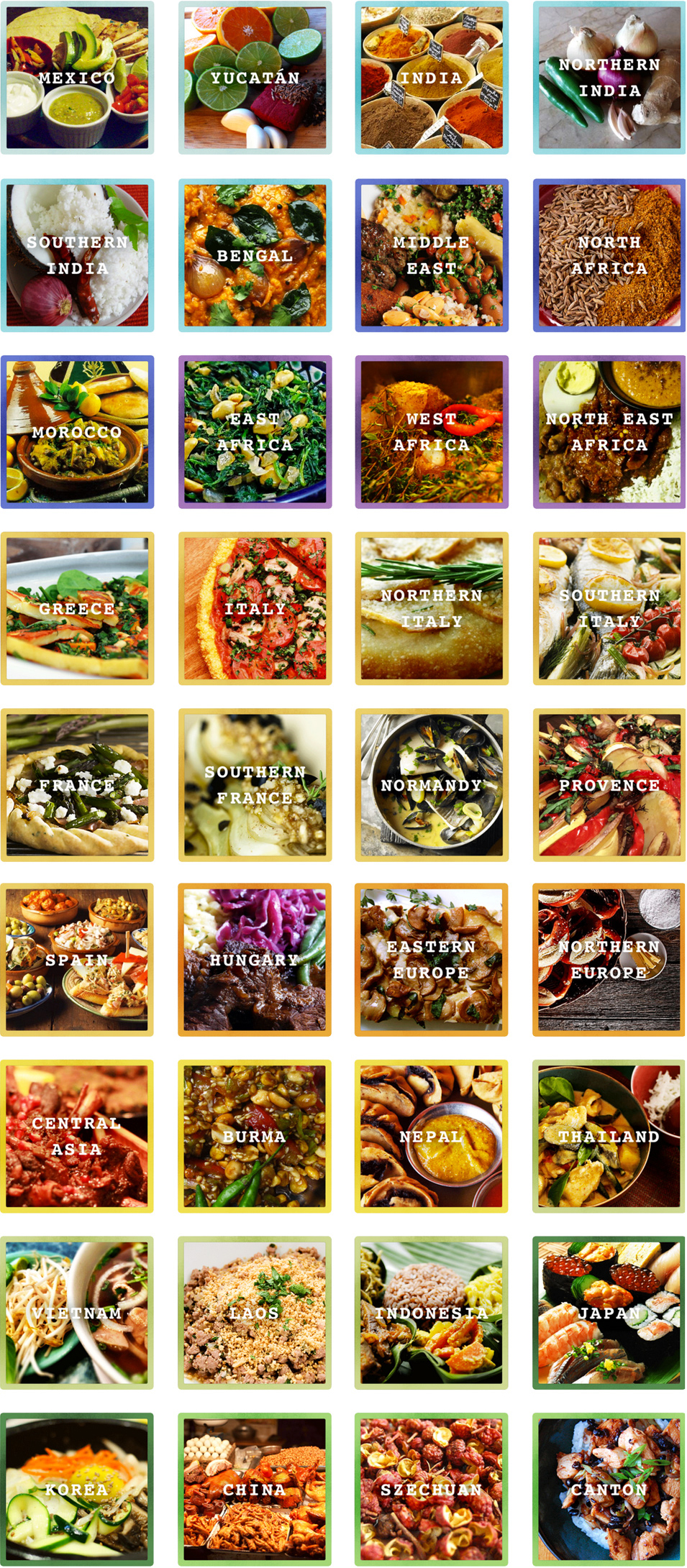Many people don't even attempt to cook ethnic food, not realizing that they can simply use a combination of the right herbs, spices, and vegetables to bring a distinctive flavor to their meals. It just takes knowing the right spices and herbs to work with. Here are a few European tastes to add to meals.
Italian Food: Practically an American Staple
How many American families dine at Italian restaurants because they don't feel confident enough to make their own spaghetti or lasagna? Or maybe when they do make Italian at home, they buy prepackaged sauce.
But much Italian food uses the same ingredients over and over – tomatoes, garlic, onions, olive oil, sweet basil, and oregano. In fact, these ingredients, along with a little salt and pepper, would make a lovely standard pasta sauce.
Olive oil is actually a main ingredient in much Mediterranean cooking. Extra virgin cold-pressed olive oil is best. Balsamic vinegar is another good condiment. Basil and oregano are good in sauce whether they are fresh or dry. And the garlic? There can never be too much garlic. Parmesan and mozzarella cheeses are also nice touches when it comes to Italian food. But that's it. Italian flavor made easy.
How to Give Foods a French Flair
French food has a distinctive flavor, but recreating it in American cooking isn't too difficult. All it takes is knowing the right spices and other condiments to add to the list of ingredients.
For example, Dijon mustard really is a great flavor that gives food a French essence. If a recipe usually calls for regular yellow mustard, substituting spicy Dijon is a good start. Herbs that give a French feeling to food include thyme, parsley, tarragon, and sage. Like Italian foods, garlic and olive oil are staples.
Other great items that evoke French cooking are cheese (think Swiss, Bleu, Brie, or Camembert) and cooking with wines and such. Recipes that use broth or water can substitute a white or red wine or sometimes something stronger like Cognac. Remember, French flavor is highly contrasted to American cooking, and strong flavors are key to a successful ethnic flavor.
Making Foods at Home with a German Flavor
So, aside from brats and sauer kraut, how can a family make a meal with German flavors and accents? Just like other foods, herbs and spices can work wonders. Some herbs and spices to use include thyme, bay leaves, rosemary, marjoram, fennel, allspice, and – of course – the ubiquitous garlic. Using veggies like carrots and onions are no fail as well.
Cheeses like Gruyere or Limburger will certainly add a German flavor to a meal. Finally, a cook who wants to go above and beyond would do well to make a dish with Spaetzle, homemade dumplings/ noodles that will give any dish authentic German taste. There are plenty of Spaetzle recipes online, from the simple (with as few as four basic ingredients most cooks are bound to have on hand) to the more complicated that use various spices, herbs, and techniques. Whatever the recipe, a German-like dumpling will add the perfect finishing touch.
Greek Flavor is Easy to Add to Home-Cooked Meals
Another Mediterranean flavor, many cooks will note that Italian and Greek foods have many ingredients in common: foods like olive oil, tomatoes, onions and oregano are standard for many cuisines in the area.
Many cooks tend to think of complicated foods when they think Greek, but not every cook needs to make a recipe with phyllo dough or put together a gyro sandwich to make something with Greek flavor. Some ingredients a cook should consider would include vegetables like olives, eggplant, cucumbers, and spinach. Feta cheese is usually also associated with Greek cooking, and yogurt is a good bet as well.
Flavor, though, always comes down to herbs and spices. Some good choices include mint, dill, bay leaves, thyme, rosemary, parsley, fennel, sage, cinnamon, and nutmeg.
Experimenting with European Flavors Can Make a Meal Fun
Cooks like to experiment and make their families feel like mealtime isn't always the same old boring food. If the cook at home isn't familiar with particular flavors, it's not a bad idea to first eat at a restaurant whose specialty is the kind of food the cook wants to duplicate. Short of that, the cook might find a few more authentic recipes first, just so he knows what "authentic" should taste like. Then he can experiment with different ingredients to add to his everyday foods. He'll be able to come up with a hint of European flavor in his regular cooking that's bound to transport the family, if even only for half an hour.

